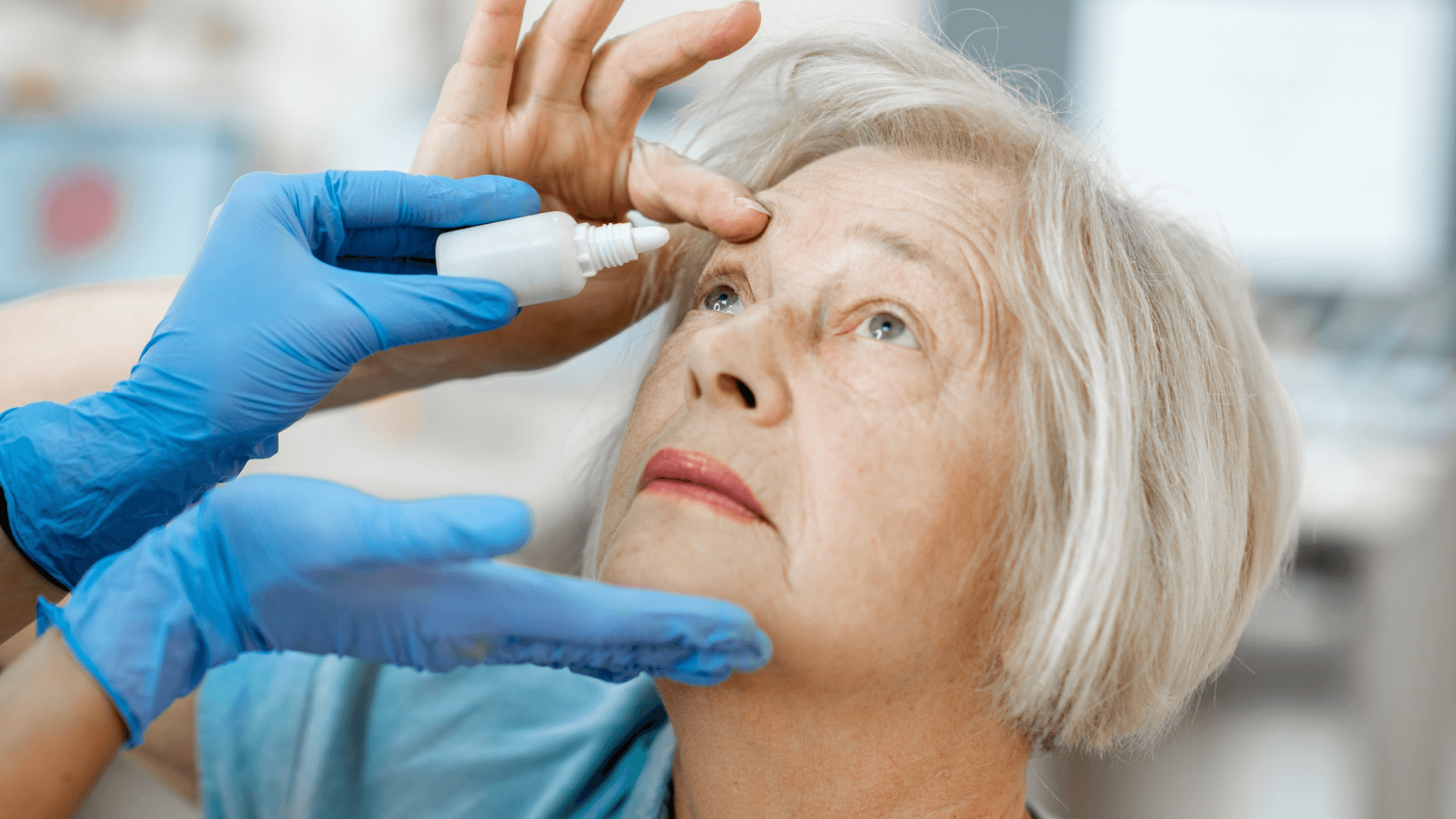Health
Managing Dry Eyes After Cataract Surgery

Cataract surgery is one of the most common and successful procedures performed to restore vision clarity. However, like any surgical procedure, it can have side effects, with dry eyes being one of the most frequent. This condition occurs when the surgery disrupts the tear film balance on the eye’s surface. The cornea, crucial for maintaining eye moisture, can have its nerve endings affected during the procedure. These nerve endings are responsible for signaling the body to produce tears, and when disrupted, the eye may not receive the necessary lubrication, leading to dryness and discomfort.
While this side effect is typically temporary, it can cause significant discomfort, including a gritty or burning sensation, and may even impact vision sharpness during recovery. Understanding this potential outcome and knowing how to manage it is essential for a smoother recovery and optimal results from cataract surgery.
Causes
Dry eyes after cataract surgery can be attributed to several factors. One of the primary causes is nerve damage. During cataract surgery, small incisions are made in the cornea, which can temporarily affect the nerves responsible for signaling tear production. This disruption can lead to reduced tear production, leaving the eye feeling dry and uncomfortable.
Another contributing factor is the medication prescribed post-surgery. Antibiotic eye drops, commonly used to prevent infection, can sometimes exacerbate dryness by altering the tear film or reducing the eye’s natural moisture. For those who already suffer from dry eye syndrome, these medications can further intensify the symptoms, making the recovery period more challenging.
Pre-existing dry eye is also a significant consideration. Individuals with dry eye before surgery are at a higher risk of experiencing more severe dryness afterward. The combination of pre-existing conditions and surgical side effects can lead to increased discomfort, emphasizing the importance of managing dry eye symptoms before and after cataract surgery.
Symptoms
After cataract surgery, many patients may notice symptoms indicating the presence of dry eyes, which can be both uncomfortable and disruptive. For instance, Ronald, a 67-year-old patient, began experiencing a persistent feeling of dryness and grit in his eye, almost as if a foreign particle was irritating the surface. This sensation was accompanied by a burning feeling, making it difficult for him to keep his eyes open for extended periods.
Ronald also noticed blurred vision, particularly in the afternoons, which interfered with his ability to read. The unstable tear film on his eye’s surface made it challenging to focus on tasks requiring sharp vision. Additionally, Ronald dealt with significant eye fatigue, feeling as though his eyes were overworked even after short periods of activity. His sensitivity to light, known as photophobia, further complicated his daily life, prompting him to wear sunglasses indoors. Recognizing these symptoms, Ronald consulted his doctor, who provided strategies to manage his dry eyes, ultimately improving his comfort during recovery.
Treatment and Management
Most cases of dry eyes after cataract surgery improve within a few months as the corneal nerves heal. During this period, managing the symptoms is crucial. Artificial tears over-the-counter lubricating eye drops can provide immediate relief from dryness and irritation. For those needing something stronger, prescription eye drops may be recommended by a doctor to help restore moisture and reduce inflammation.
Warm compresses can also be beneficial. Applying a warm compress to the eyes stimulates tear production and soothes irritation. Additionally, eye exercises, such as regular blinking or focusing on distant objects, can help improve tear distribution and reduce eye strain.
Minimizing exposure to environmental irritants like smoke, wind, and dry environments is essential to prevent further aggravation of symptoms. Creating a comfortable environment for your eyes as they heal is important.
If dry eye symptoms persist or worsen, it’s crucial to consult an eye doctor. They can evaluate the condition and recommend appropriate treatment options to ensure smooth recovery.
While dry eyes after cataract surgery can be uncomfortable, understanding the causes and symptoms, along with effective treatment and management strategies, can significantly improve recovery. By using artificial tears, applying warm compresses, performing eye exercises, and avoiding irritants, you can alleviate symptoms and support the eyes’ natural healing process. Addressing dry eyes promptly will help ensure the full benefits of cataract surgery, leading to clearer vision and a more comfortable daily life.
Health
Europe Faces Growing Challenges in Meeting Medical Care Needs, EU Report Shows

A new report has highlighted stark disparities in healthcare access across Europe, revealing that a growing number of citizens face unmet medical needs due to systemic issues such as high costs and long waiting times.
According to the latest data from Eurostat and the Health at a Glance: Europe 2024 report, 3.8 per cent of EU residents aged 16 and over reported unmet medical needs in the past year. However, the percentage climbs significantly when focusing solely on individuals who actively required healthcare services — with some countries reporting unmet needs among over 20 per cent of this group.
The causes are twofold: healthcare system barriers, including long waiting lists and treatment costs, account for 2.4 per cent of all cases, while 1.4 per cent stem from personal reasons such as fear of doctors, lack of time, or lack of knowledge about available care.
Unmet healthcare needs vary widely across the continent. Estonia tops the list within the EU, with 15.5 per cent of people reporting unmet needs, followed closely by Greece and Albania, each over 13 per cent. Even wealthier Nordic countries show surprising figures — Denmark (12.2 per cent), Finland, and Norway (over 7.5 per cent) — despite high healthcare spending. Conversely, countries such as Germany (0.5 per cent), Austria (1.3 per cent), and the Netherlands (1.4 per cent) report the lowest levels, pointing to more efficient and accessible healthcare systems.
Cost is a dominant barrier in nations like Greece and Albania, where over 9 per cent of citizens cited unaffordable care. In contrast, long waiting times are the primary issue in countries like Estonia (12 per cent) and Finland (7.5 per cent).
Income inequality also plays a major role. On average, 3.8 per cent of low-income individuals across the EU report unmet needs due to healthcare system issues — more than triple the 1.2 per cent reported by higher-income groups. In Greece, that gap is particularly wide, with 23 per cent of low-income respondents affected.
Healthcare experts say these disparities reflect more than just economic factors. Dr. Tit Albreht, President of the European Public Health Association (EUPHA), noted, “Unmet health needs arise from different reasons, including how well healthcare governance integrates services to meet population needs.”
Industry leaders, such as Tina Taube of the European Federation of Pharmaceutical Industries and Associations (EFPIA), stressed the importance of timely access to diagnosis and treatment. “Unmet needs are context-specific,” she said. “It’s not just about product availability, but also healthcare system readiness.”
Andy Powrie-Smith of EFPIA added that patients in some European countries wait up to seven times longer than others for the same treatments due to regulatory delays and varying national infrastructures.
The findings underscore the need for a more coordinated, equitable healthcare strategy across the continent, especially as Europe faces the challenges of an ageing population and increasingly complex medical technologies.
Health
Chinese Nationals Charged in U.S. with Smuggling Toxic Fungus Labeled a Potential Agroterrorism Threat

U.S. federal authorities have charged two Chinese nationals in connection with smuggling a dangerous agricultural fungus into the country, a move investigators describe as posing significant national security risks.
Yunqing Jian, 33, and Zunyong Liu, 34, are accused of conspiracy, smuggling, making false statements, and visa fraud after allegedly attempting to bring Fusarium graminearum — a toxic fungus capable of devastating crops and harming humans and livestock — into the United States. The case was detailed in a court filing by the Federal Bureau of Investigation (FBI) in Detroit.
The fungus, which targets essential food staples like wheat, maize, barley, and rice, is described in a scientific journal cited by the FBI as a “potential agroterrorism weapon.” Experts warn that its spread could inflict serious damage on global food security and agricultural economies.
U.S. Attorney Jerome Gorgon Jr. emphasized the seriousness of the case, stating: “The alleged actions of these Chinese nationals, including a loyal member of the Chinese Communist Party, are of the gravest national security concerns.”
Jian made her first appearance in a Detroit federal court on Tuesday and remains in custody awaiting a bond hearing scheduled for Thursday. A court-appointed attorney for her initial appearance declined to comment.
According to the FBI’s complaint, the investigation began in July 2024 when Liu was stopped at Detroit Metropolitan Airport. During a routine screening, customs officials discovered suspicious red plant material in his backpack. Liu initially claimed not to know what it was but later admitted he planned to use it for research purposes at the University of Michigan, where Jian is currently employed and where Liu previously worked.
Authorities say Liu’s mobile phone contained an article titled “Plant-Pathogen Warfare under Changing Climate Conditions,” raising further concerns about the intended use of the samples. The FBI believes the two individuals were coordinating to introduce the pathogen into a U.S. research setting without proper clearance or oversight.
Liu was denied entry to the U.S. and deported in July. Charges against both individuals were filed this week, as prosecutors continue to investigate the scope of the alleged conspiracy.
The case underscores growing concerns in the U.S. over biosecurity and potential misuse of scientific research amid rising geopolitical tensions.
Health
US Expands Measles Vaccination Guidance Amid Global Surge in Cases
-

 Business1 year ago
Business1 year agoSaudi Arabia’s Model for Sustainable Aviation Practices
-

 Business1 year ago
Business1 year agoRecent Developments in Small Business Taxes
-

 Politics1 year ago
Politics1 year agoWho was Ebrahim Raisi and his status in Iranian Politics?
-

 Business11 months ago
Business11 months agoCarrectly: Revolutionizing Car Care in Chicago
-

 Business11 months ago
Business11 months agoSaudi Arabia: Foreign Direct Investment Rises by 5.6% in Q1
-

 Technology1 year ago
Technology1 year agoComparing Apple Vision Pro and Meta Quest 3
-

 Politics1 year ago
Politics1 year agoIndonesia and Malaysia Call for Israel’s Compliance with ICJ Ruling on Gaza Offensive
-

 Sports10 months ago
Sports10 months agoKeely Hodgkinson Wins Britain’s First Athletics Gold at Paris Olympics in 800m


























